Abstract
1. The post-synaptic action of efferent fibres on lateral line organs in the burbot was investigated with extracellular electrodes.
2. Selective excitation of efferent fibres or stimulation of the lateral line nerve causes a negative efferent potential in the epithelium, an increase in the microphonic potential, and inhibition of afferent nerve impulses.
3. Stimulation of the lateral line nerve causes antidromic impulses in the afferent fibres in addition to exciting the efferent fibres. However, stimulation of the lateral line nerve has no post-synaptic influence on lateral line organs when the efferent synapses are selectively blocked by gallamine.
4. The influence of efferent stimulation on the microphonic potential is greater at large amplitudes of mechanical stimulation than at low.
5. The similarities between the effects of efferent stimulation in the lateral line organ and in the cochlea suggest similar synaptic mechanisms.
Full text
PDF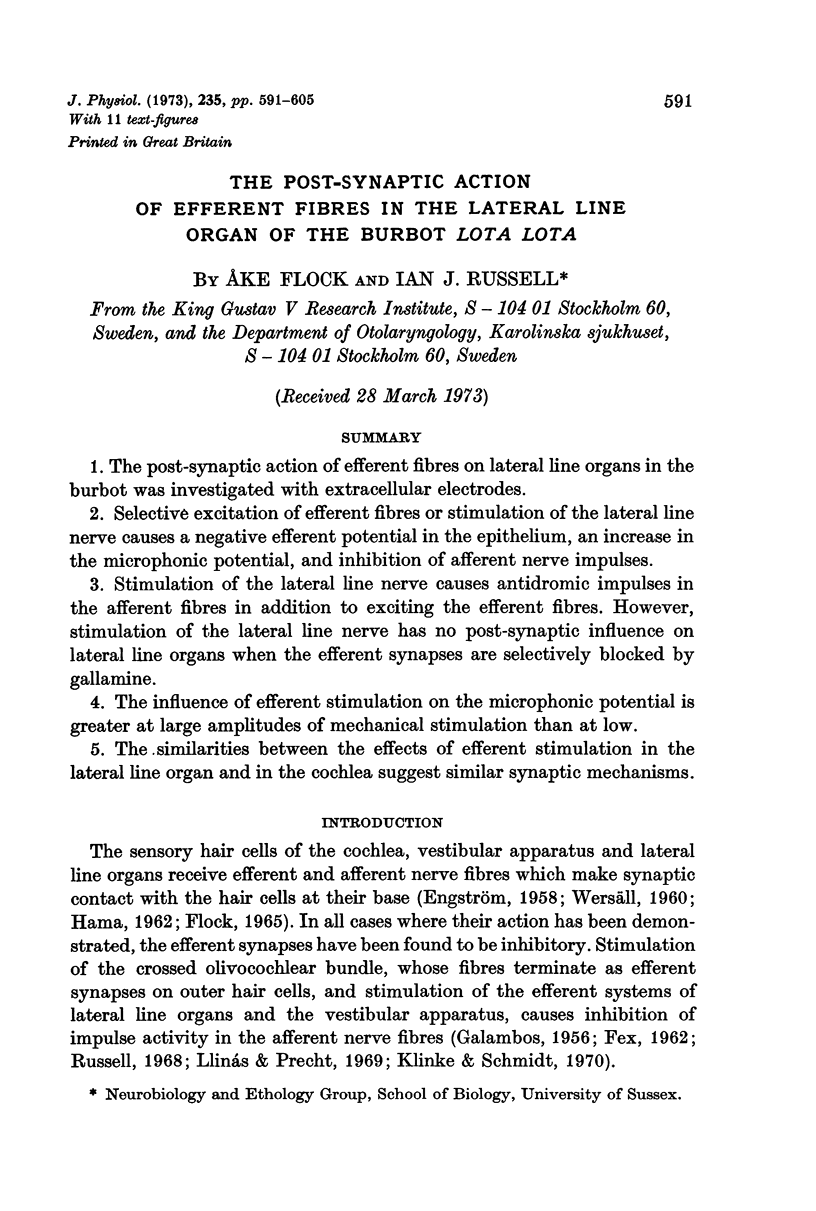

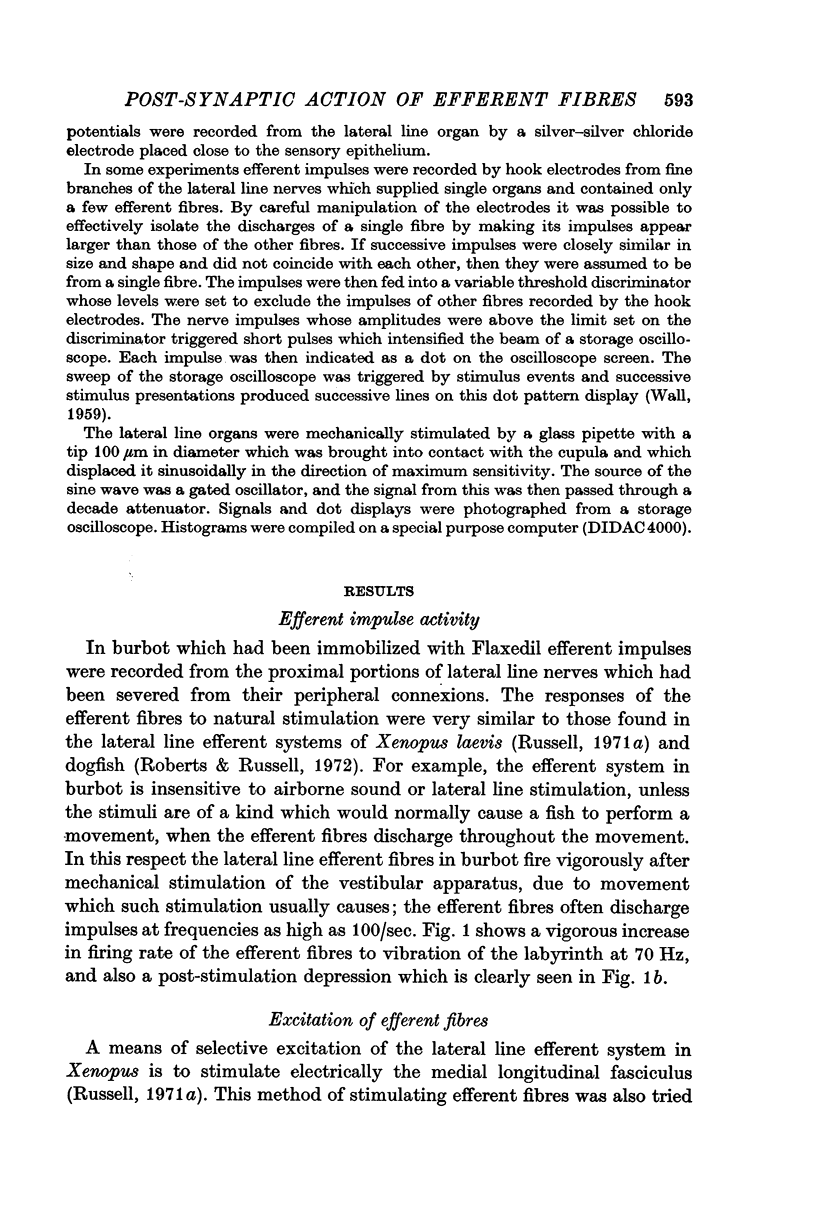
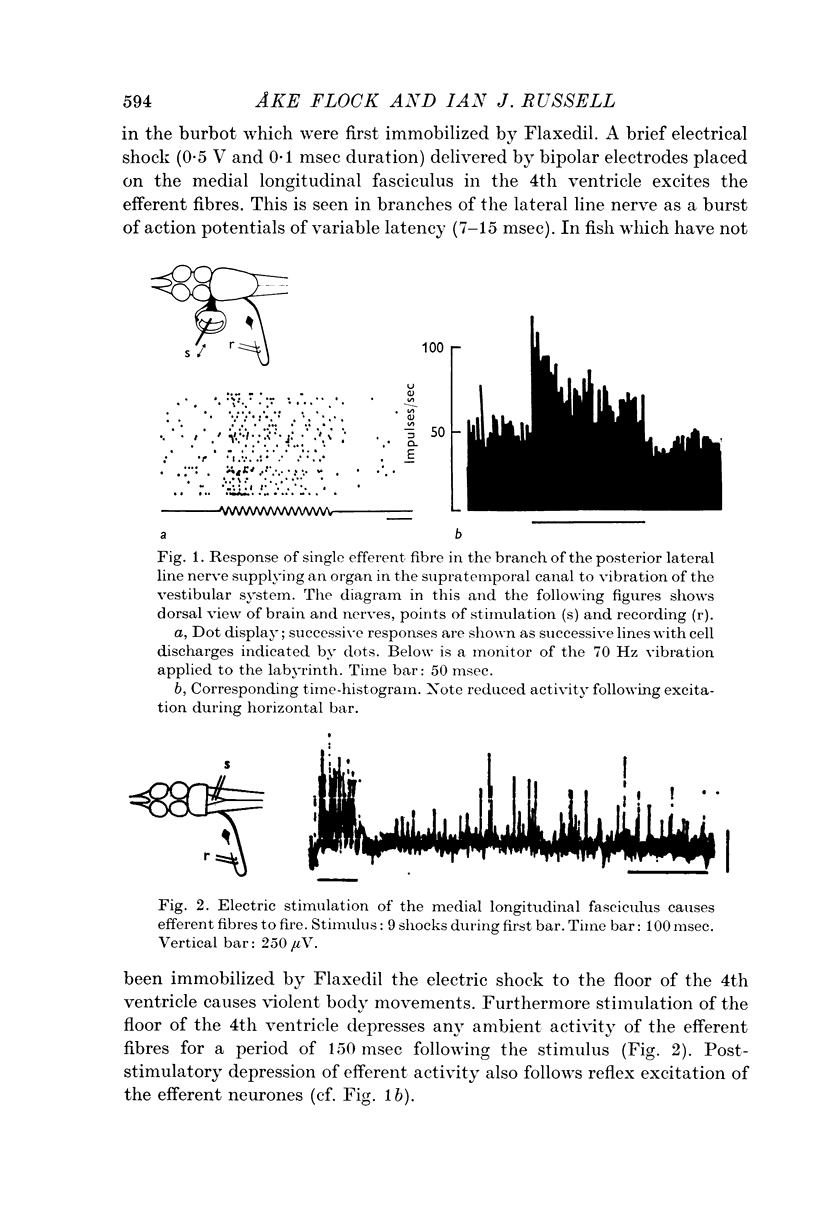
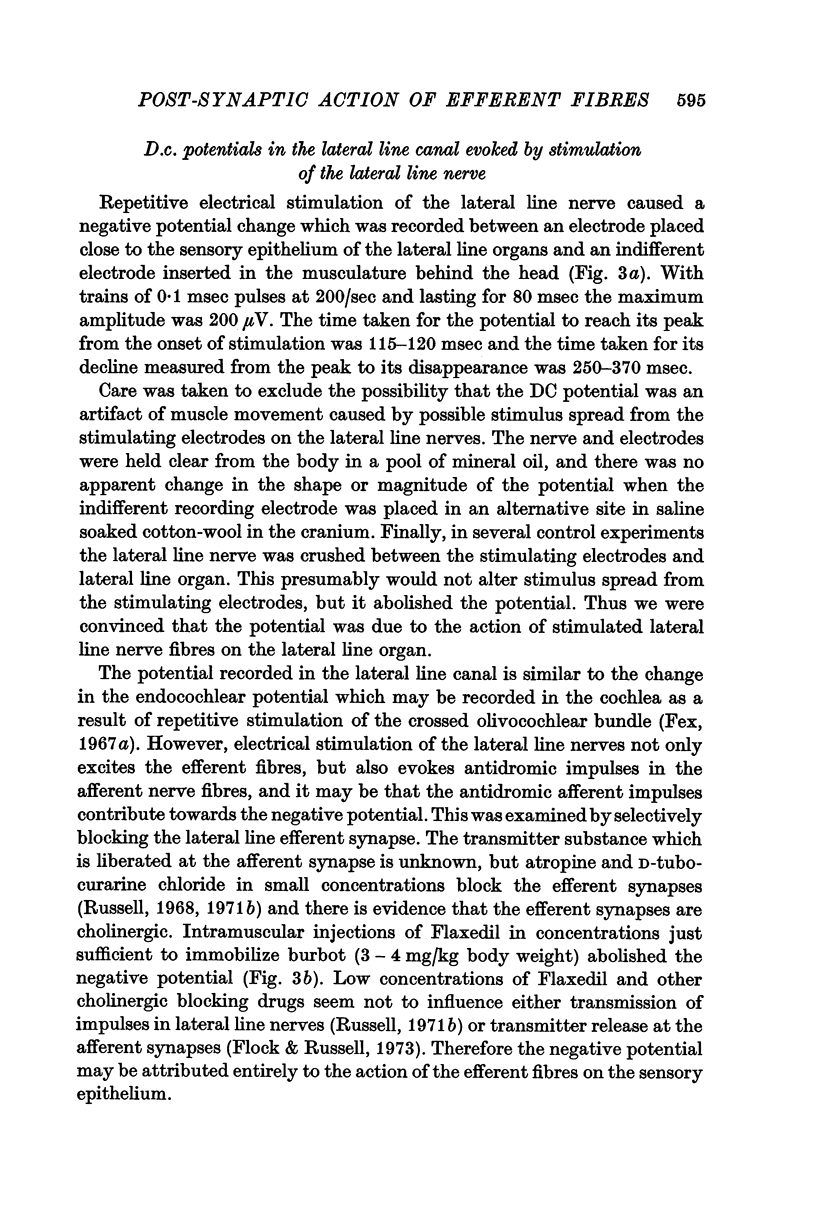
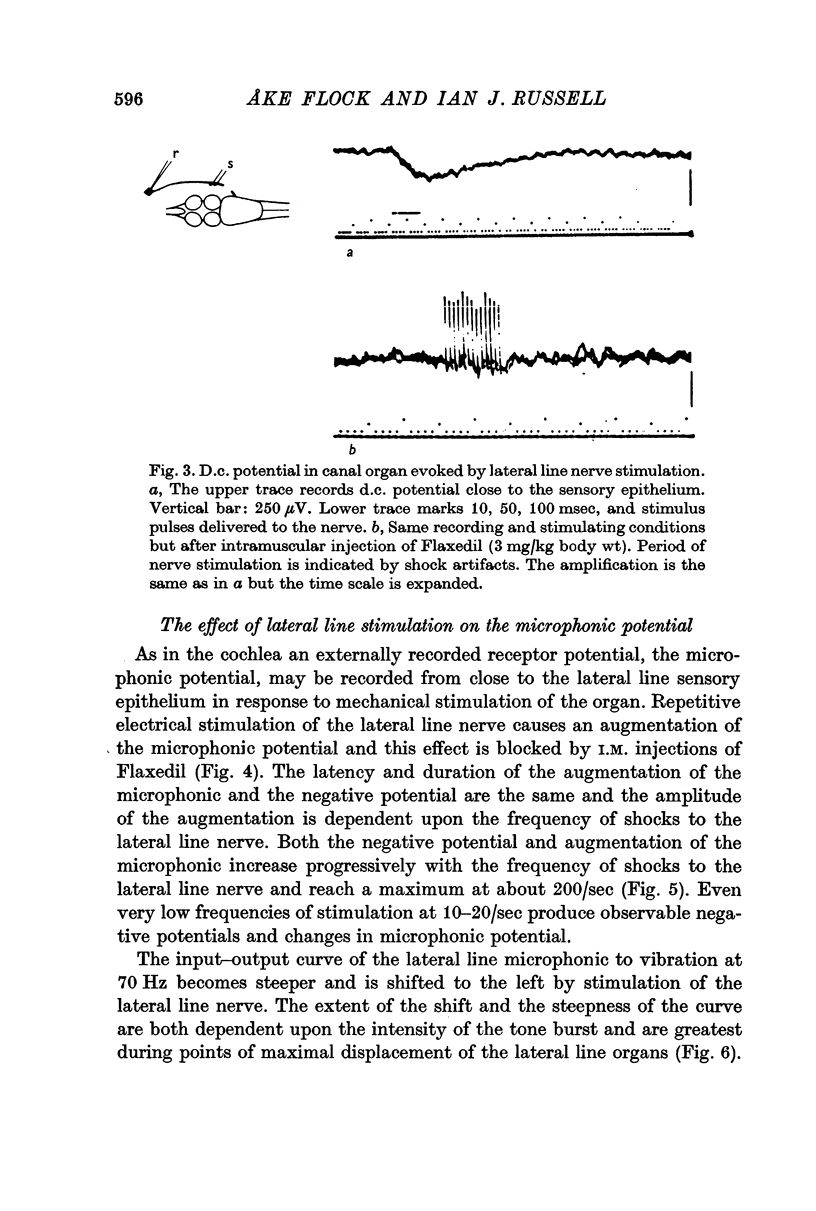
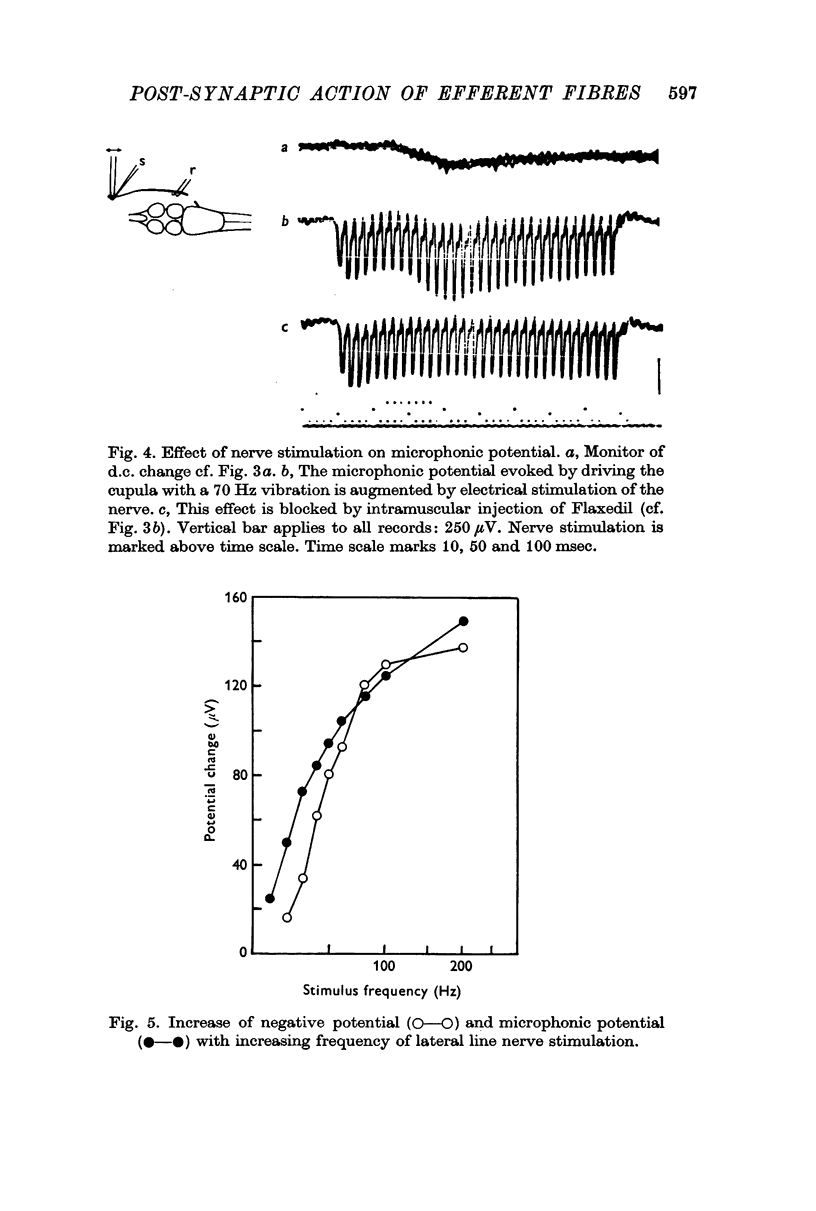
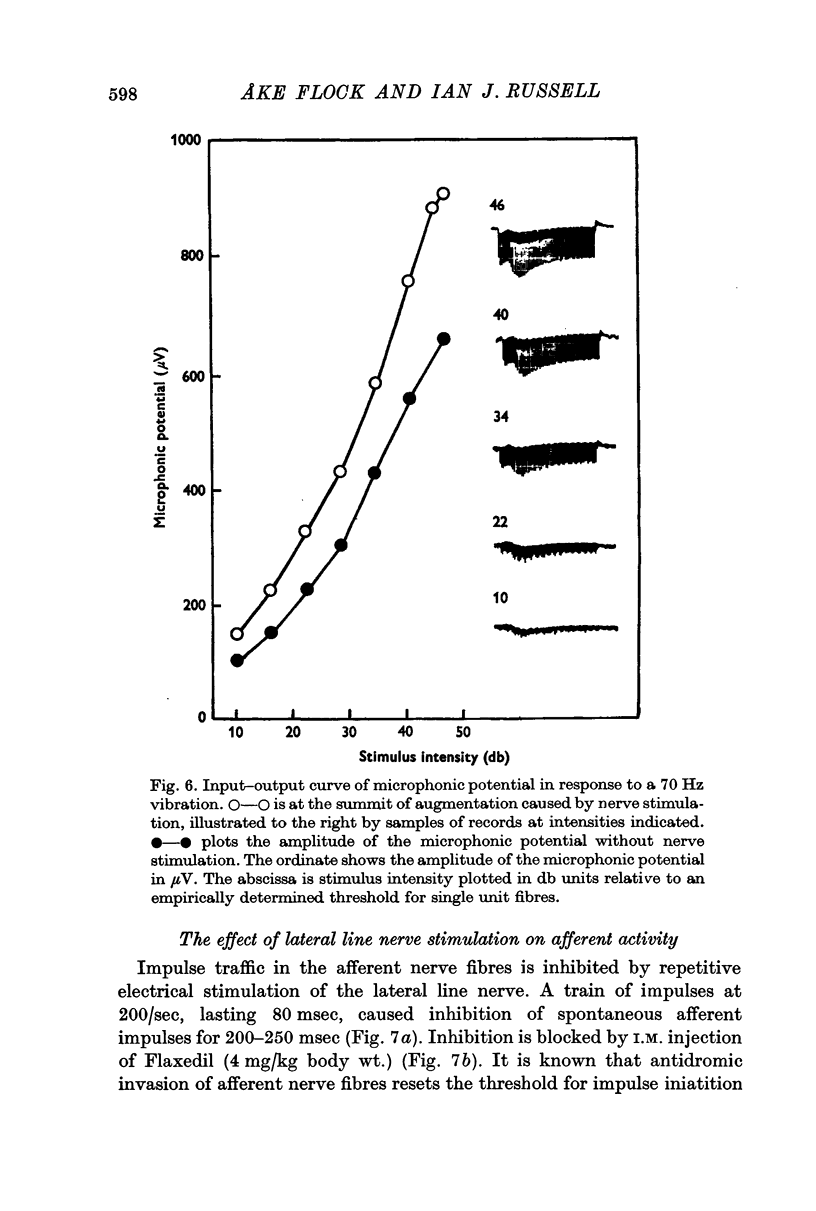
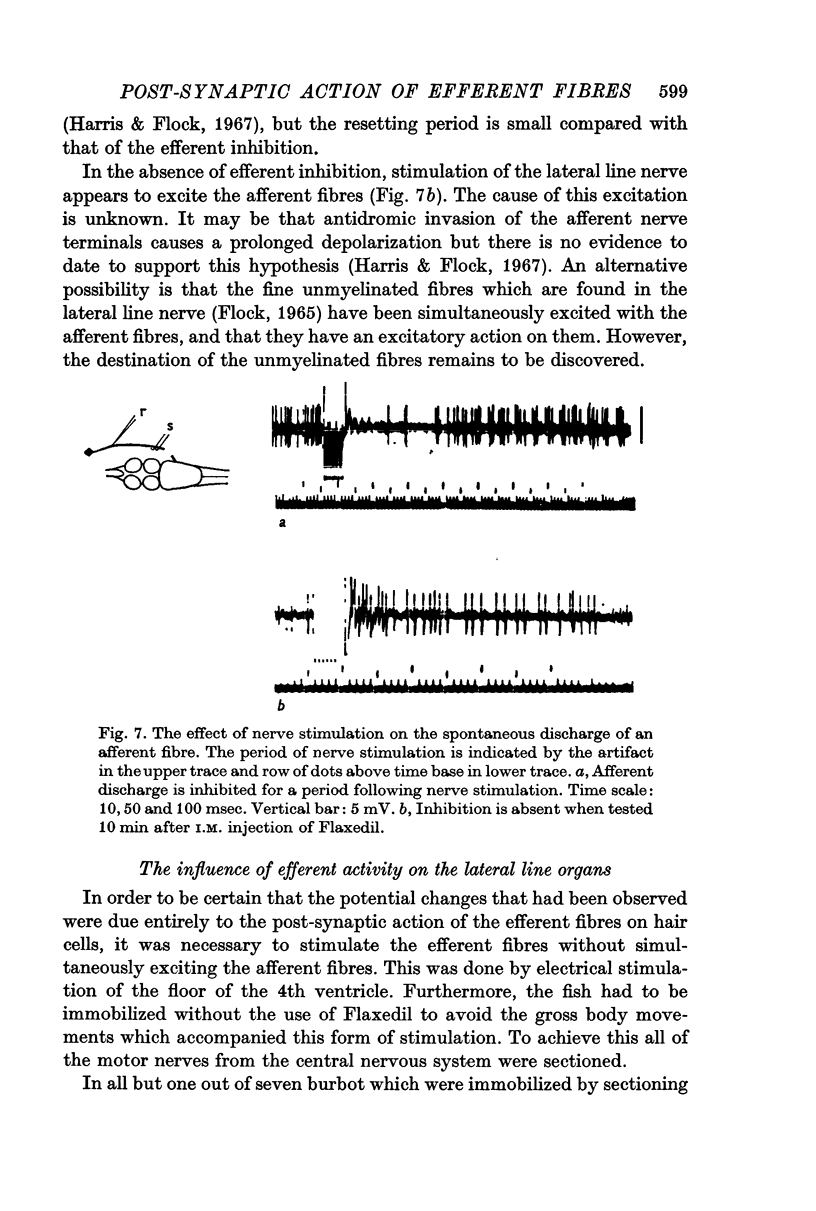
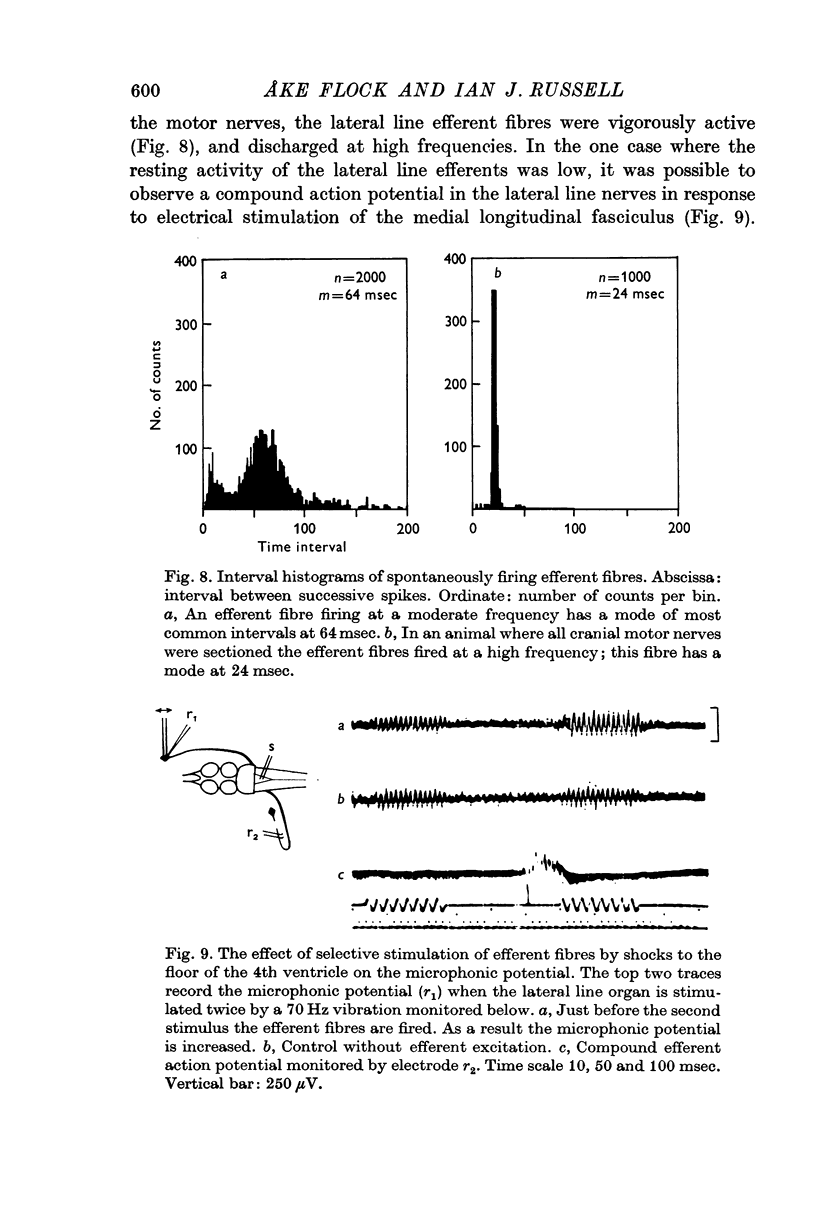
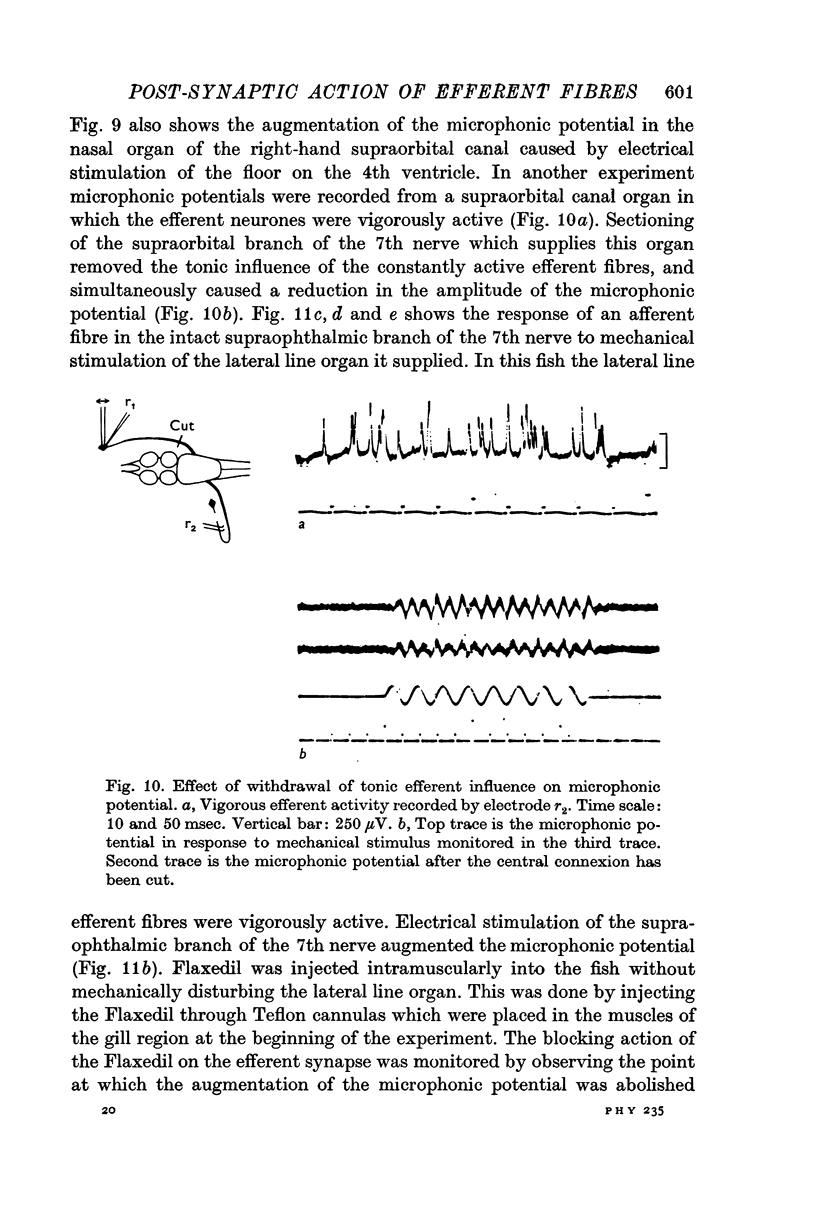
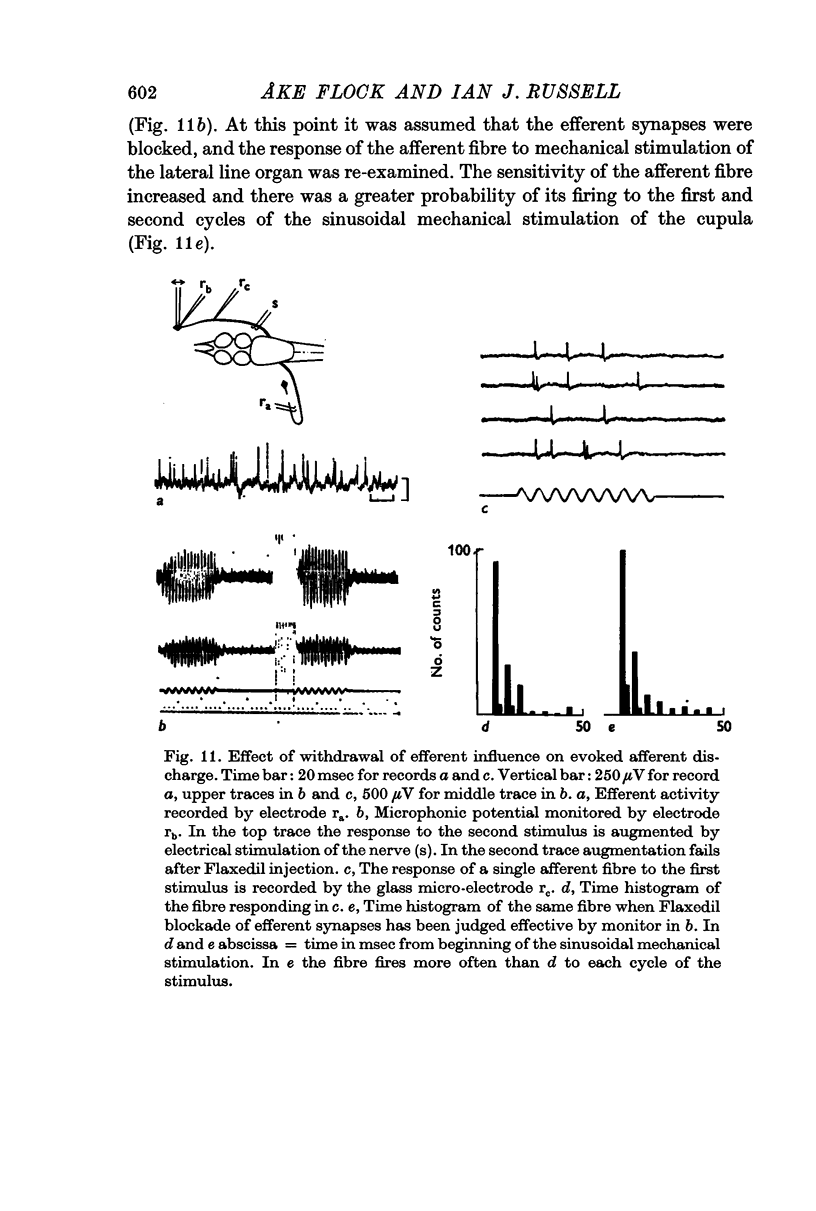
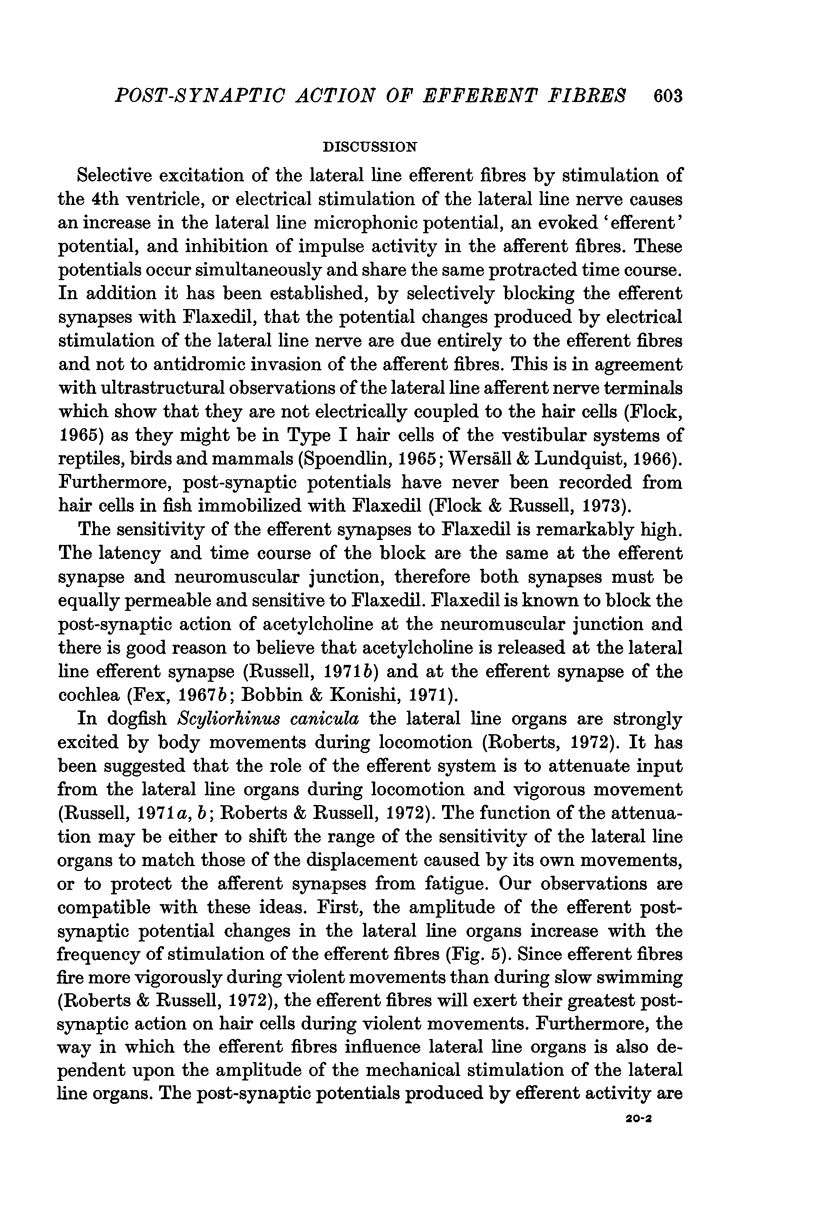

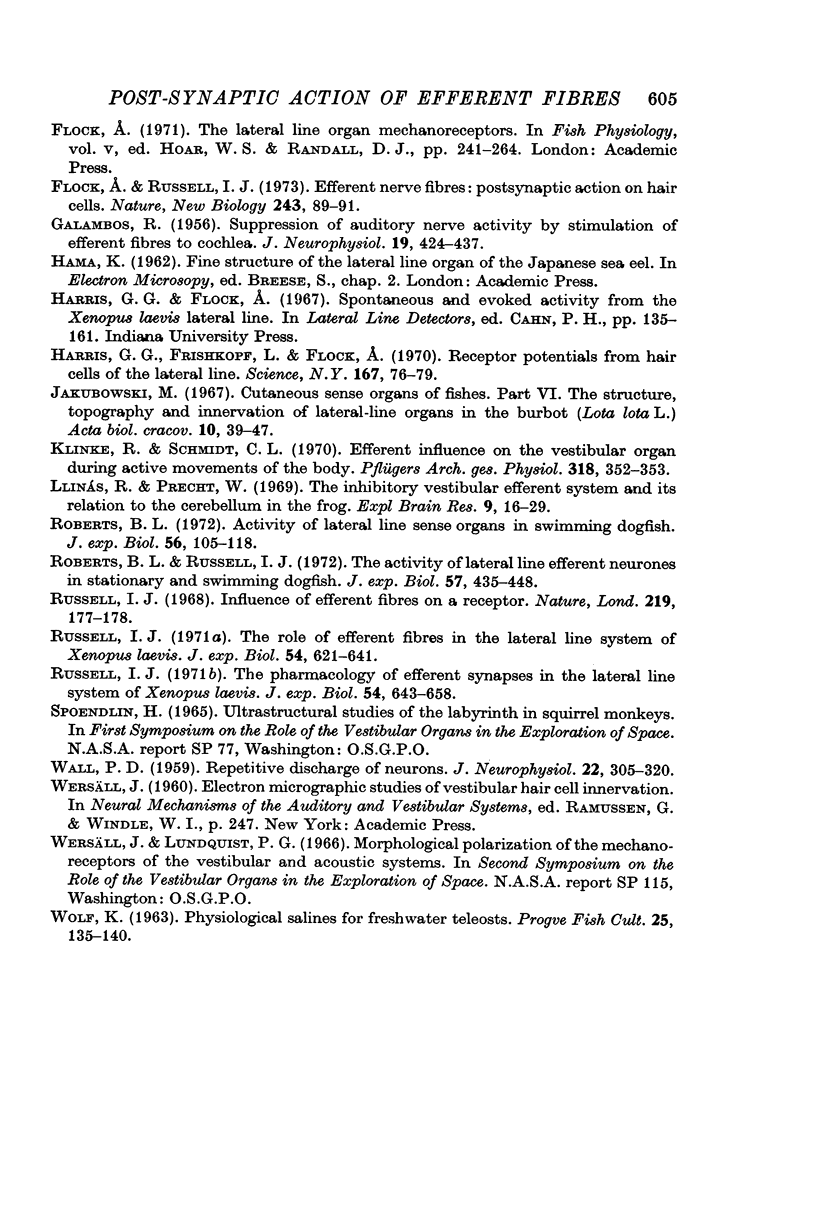
Selected References
These references are in PubMed. This may not be the complete list of references from this article.
- Bobbin R. P., Konishi T. Acetylcholine mimics crossed olivocochlear bundle stimulation. Nat New Biol. 1971 Jun 16;231(24):222–223. doi: 10.1038/newbio231222a0. [DOI] [PubMed] [Google Scholar]
- Fex J. Efferent inhibition in the cochlea related to hair-cell dc activity: study of postsynaptic activity of the crossed olivocochlear fibres in the cat. J Acoust Soc Am. 1967 Mar;41(3):666–675. doi: 10.1121/1.1910395. [DOI] [PubMed] [Google Scholar]
- Flock A., Russell I. Efferent nerve fibres: postsynaptic action on hair cells. Nat New Biol. 1973 May 16;243(124):89–91. [PubMed] [Google Scholar]
- GALAMBOS R. Suppression of auditory nerve activity by stimulation of efferent fibers to cochlea. J Neurophysiol. 1956 Sep;19(5):424–437. doi: 10.1152/jn.1956.19.5.424. [DOI] [PubMed] [Google Scholar]
- Harris G. G., Frishkopf L. S., Flock A. Receptor potentials from hair cells of the lateral line. Science. 1970 Jan 2;167(3914):76–79. doi: 10.1126/science.167.3914.76. [DOI] [PubMed] [Google Scholar]
- Llinás R., Precht W. The inhibitory vestibular efferent system and its relation to the cerebellum in the frog. Exp Brain Res. 1969 Aug 19;9(1):16–29. doi: 10.1007/BF00235449. [DOI] [PubMed] [Google Scholar]
- Roberts B. L., Russell I. J. The activity of lateral-line efferent neurones in stationary and swimming dogfish. J Exp Biol. 1972 Oct;57(2):435–448. doi: 10.1242/jeb.57.2.435. [DOI] [PubMed] [Google Scholar]
- Russell I. J. Influence of efferent fibres on a receptor. Nature. 1968 Jul 13;219(5150):177–178. doi: 10.1038/219177a0. [DOI] [PubMed] [Google Scholar]
- Russell I. J. The pharmacology of efferent synapses in the lateral-line system of Xenopus laevis. J Exp Biol. 1971 Jun;54(3):643–658. doi: 10.1242/jeb.54.3.643. [DOI] [PubMed] [Google Scholar]
- Russell I. J. The role of the lateral-line efferent system in Xenopus laevis. J Exp Biol. 1971 Jun;54(3):621–641. doi: 10.1242/jeb.54.3.621. [DOI] [PubMed] [Google Scholar]
- WALL P. D. Repetitive discharge of neurons. J Neurophysiol. 1959 May;22(3):305–320. doi: 10.1152/jn.1959.22.3.305. [DOI] [PubMed] [Google Scholar]


